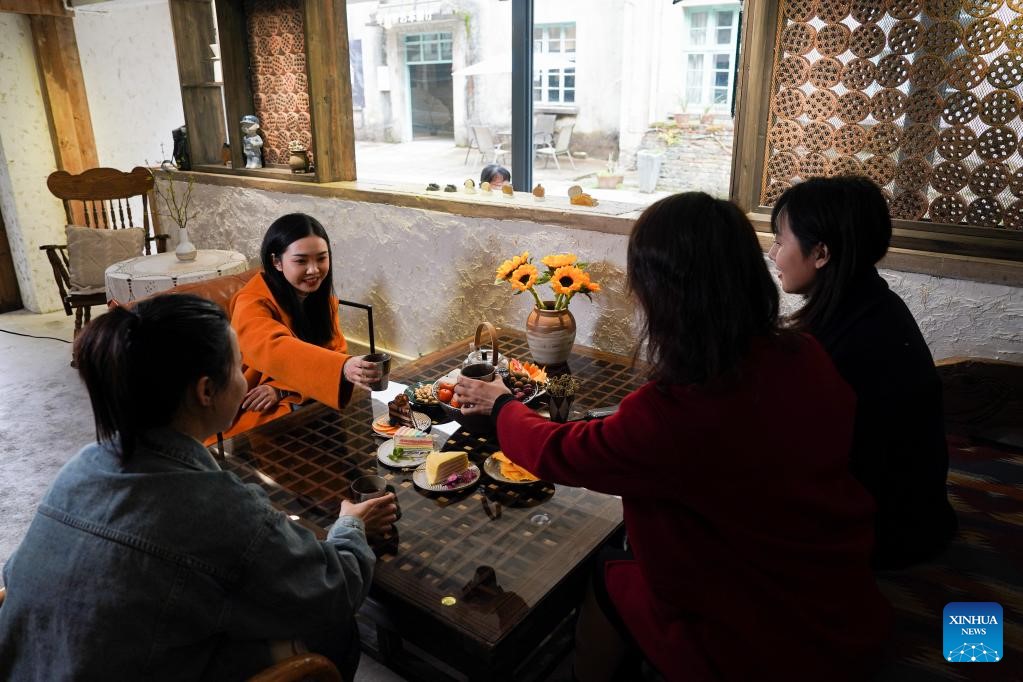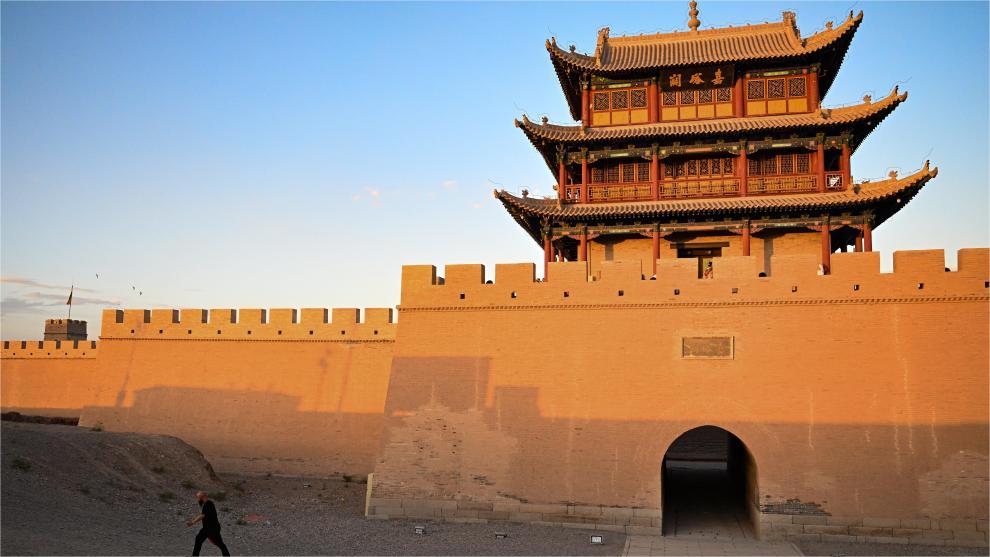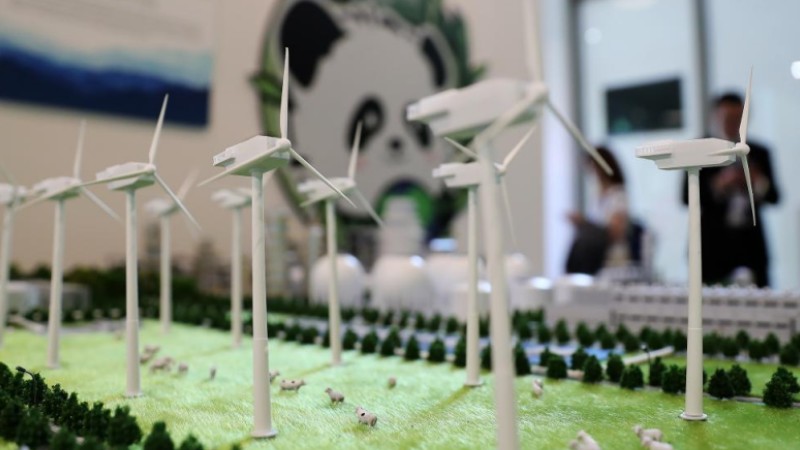China's tea industry moves towards high-quality development

Young customers drink tea at a teahouse in Huangshan city, east China's Anhui Province, March 9, 2023. (Xinhua/Du Yu)
China's tea industry has steadily moved towards high-quality development in recent years.
In 2022, the country's domestic tea sales volume approached 2.4 million tonnes, with total sales worth over 339.5 billion yuan (about $47.96 billion), up by 4.15 percent and 8.82 percent year on year, respectively, according to a report issued by the China Tea Marketing Association (CTMA).
China's total tea output in this year's spring season is estimated to reach 1.4 to 1.5 million tonnes.
"In recent years, leveraging the advantage of China's enormous domestic market, the tea industry has completed adjustments and upgrades in the consumption structure. While maintaining basic stability in market demand, new growth areas have been nurtured and expanded, including flower tea and tea derivatives," said Wang Qing, president of the CTMA.
Influenced by modern lifestyles, there are new shifts in demand for tea and related products, Wang added.
While green tea, black tea, dark tea, and oolong tea remain the most favored categories for consumers, white tea has realized double-digit annual growth in recent years. With the popularity of traditional Chinese culture, new Chinese-style tea houses that emphasize tea-drinking traditions and scenario-based experiences have gained in popularity.
Tea has been better received by consumers born in the 1980s, 1990s and even 2000s, who demand personalized, diverse and health-focused tea and related products. It's expected that by 2025, the value of China's sugar-free tea drink market will exceed 10 billion yuan.
Online consumption of tea has expanded. Last year, total online tea transactions in China exceeded 33 billion yuan, with the compound annual growth rate in the past three years averaging more than 10 percent.
Data from China's service-focused e-commerce giant Meituan suggested that from January to June this year, over 30,000 new tea houses emerged nationwide, and orders received by tea houses across the country surged 115 percent year on year.
Overall, tea consumption is moving toward the medium-high end, cost-effective tea products become more popular among consumers, and health concepts are driving the sustained growth of tea consumption, Wang said.
In response to new changes in consumer demand, China's tea industry is seizing on opportunities and continuing efforts on the supply side to enhance supply capacity, and increase product variety and added value, said Mei Yu, vice president of the CTMA.
Mei added that a sound, self-controlled, safe and efficient tea industry and supply chain has taken shape in China.
Thanks to the application of new technologies and new energy, tea processing has become greener, more energy-efficient, safer and cleaner in recent years. Standardized production lines for various tea types have been widely adopted.
The integration of tea with tourism has also extended the tea industrial chain and enhanced the added value of tea products, becoming a new approach to fattening tea growers' wallets. Various regions have vigorously promoted high-quality and diverse upgrades of the tea cultural industry, tapping into local traditional tea culture, intangible cultural heritage and red culture to develop premium tea-themed tourism products.
Over the past years, new Chinese-style tea drinks represented by the popular Chinese drink chain HEYTEA and other brands have entered the lives of ordinary people, becoming particularly popular among consumers.
Industry insiders believe that China's tea industry should keep pace with the times and deepen supply-side reforms to enhance the balance between supply and demand by improving the supply structure and quality. Only by realizing industrialization, scalization, marketization and internationalization can the country's tea industry achieve higher-quality development.
To promote the higher-quality development of the tea industry, China should quickly establish standardized production to improve supply chain management efficiency. The country also needs to strengthen brand building to drive consumption upgrading, and enhance support in terms of science and technology to boost the sector's steady and long-term development.
Photos
Related Stories
Copyright © 2023 People's Daily Online. All Rights Reserved.









